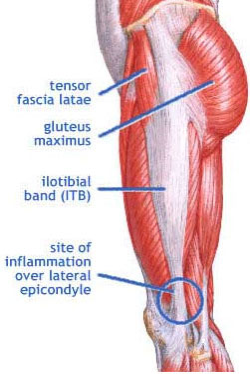What’s Butt Got To Do With It: Importance of Strong Glutes
What’s your butt got to do with it? The answer is ‘everything’. Try to imagine what it would be like if you took a step and lost all muscle control around your hip. You would most likely fall down, as your hip would collapse to the side, and send you sprawling.
Perhaps this can make you appreciate the complexity of what happens around your hip joint with every step. Almost everyone these days knows about the major muscles around the hip, including your ‘hip flexors’ and Gluteus Maximus. Some are even more knowledgeable, and recognize the names of muscles like Gluteus Medius and Minimus or more commonly referred to as Glutes. It is well known in the fitness industry how beneficial it is to train your ‘Glutes’, but it is easy to overlook the functional significance of the Glutes and other muscles of the hip. What I want to help you understand is how these muscles work in our day-to-day lives, and how we can ‘train’ them to prevent injuries.
Key Supportive Muscles
One of the key muscles in weight-bearing (standing and walking) is Tensor Fascia Latae or TFL. It is the muscle towards the front of your pelvis and hip joint that acts in many different ways depending on our hip position, and what we are doing. It’s primary role is to act as a ‘hip flexor’ and lateral stabilizer of the hip.

If you put your fingers on this muscle, you will feel it be ‘active’ during almost all phases of walking and running. TFL acts on the hip via it’s attachment to the Iliotibial Band (ITB). When you bear weight on one leg, TFL is active to prevent your hip from ‘dropping’ out to the side. This job at the hip is shared with Gluteus Medius and Minimus for the most part. When Gluteus Medius and Minimus are weak or injured, TFL ends up doing the majority of this work. The result is a ‘tight’ TFL, and ultimately, increased ‘tension’ in your ITB. Many problems at the hip can be linked to this hypertonicity in the TFL, along with weak Gluteus Medius and Minimus.
Strengthen to Prevent Injuries
What we see all-to-often clinically, is something termed ‘dynamic valgus’ at the knee. What this simply means is that when you squat (particularly on 1 leg), your knee moves inward towards your other leg as you go down. This happens because of a combination of factors at your hip joint, and it is a great indicator for us of someone who is at risk of injury. At the hip joint, there is a ‘drop’ of the pelvis towards the opposite side, and a rotation of the femur (thigh bone) inward. It is a dysfunctional pattern of movement, that can lead to injuries anywhere along the ‘chain’ from your low back to your foot.

In training our bodies to overcome this faulty pattern of movement, much of the solution lies with simply being aware of your form with exercises. Doing exercises like lunges, squats, jumps, etc. with ‘good form’ will go a long way towards overcoming these movement patterns. It is a matter of teaching our bodies a different way of moving than that to which we have become accustomed. Strengthening muscles like Gluteus Maximus, Medius and Minimus, along with our hip rotator muscles will enable us to have the strength and endurance to tolerate heavy and sustained loading, such as stairs, squatting, or endurance running with good form.
Finally, being aware of which muscles are active during an exercise can be very beneficial in strengthening the muscles we are meaning to target. If you are doing an exercise for your ‘Glutes’, make sure that you are thinking about recruiting those muscles, and put your fingers on those muscles to ensure they are activating. Being able to selectively recruit muscles like your Glutes goes a long way towards being able to control dynamic valgus at your knee.
Kevin Stoll, Bsc.PT
Kamloops Physiotherapy & Sports Injury Centre, Clinical Associate
No Comments